Concentric Circles Shawl
Bands of lace radiate out from the center of our Concentric Circles Shawl like rings of water around a dropped pebble, exquisite in their measured, rhythmic simplicity.
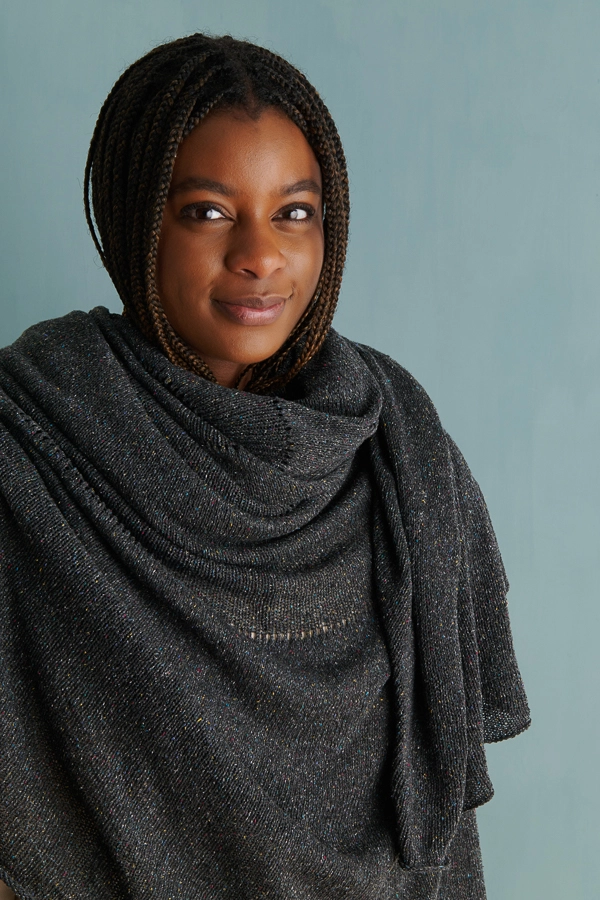
This shawl spirals out from the middle. Using Elizabeth Zimmermann’s classic Pi Shawl formula as a foundation for our design, we knit this shawl in the round, alternating rounds of increases with sections of knitting that grow exponentially as the circle expands.
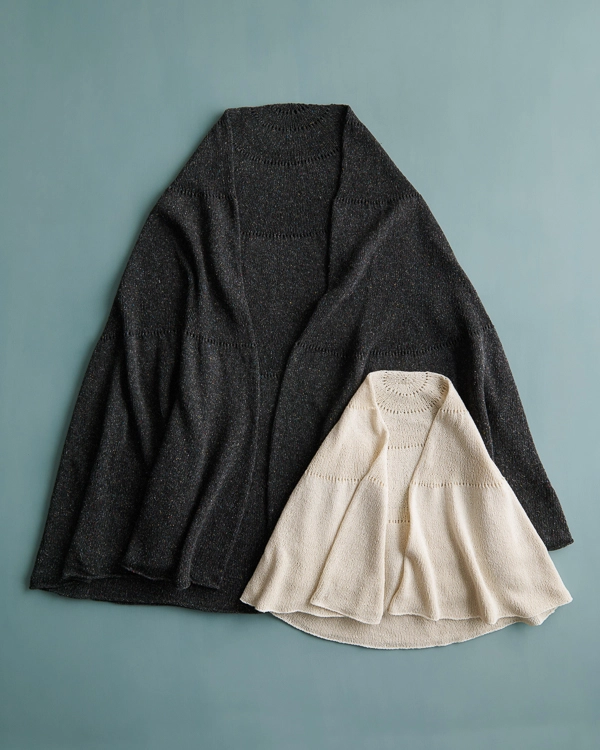
Yarn-over increases create lace circles that orbit the shawl’s centerpoint… So simple, it’s stunning.
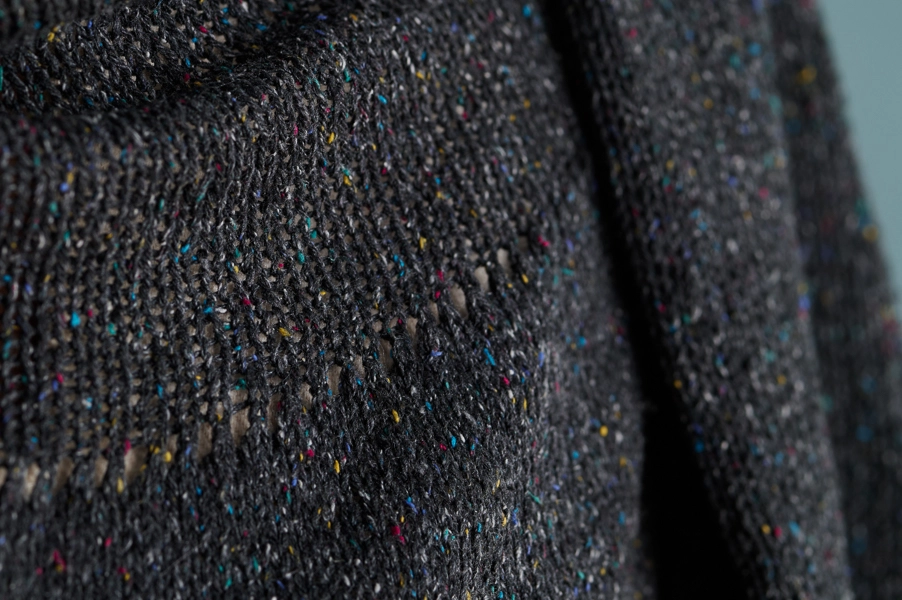
Speaking of stunning, the offhand elegance of our Cattail Silk lends depth and interest to this knit, its 100% mulberry silk alive with texture and beauty.

We knit our versions in Moon White and Flower Field Charcoal, but there are twenty gorgeous colors for you to choose from.
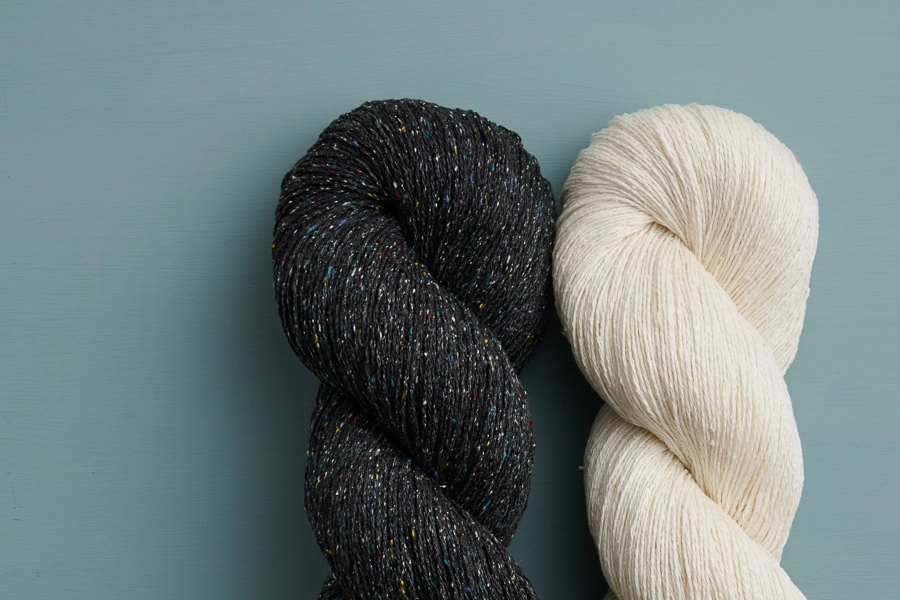
And at over 600 yards per skein, it only takes two skeins for the smaller size and seven for the wonderfully gigantic swimming-in-beauty size. So, pick your favorite color, and cast on for some easy-breezy elegance!
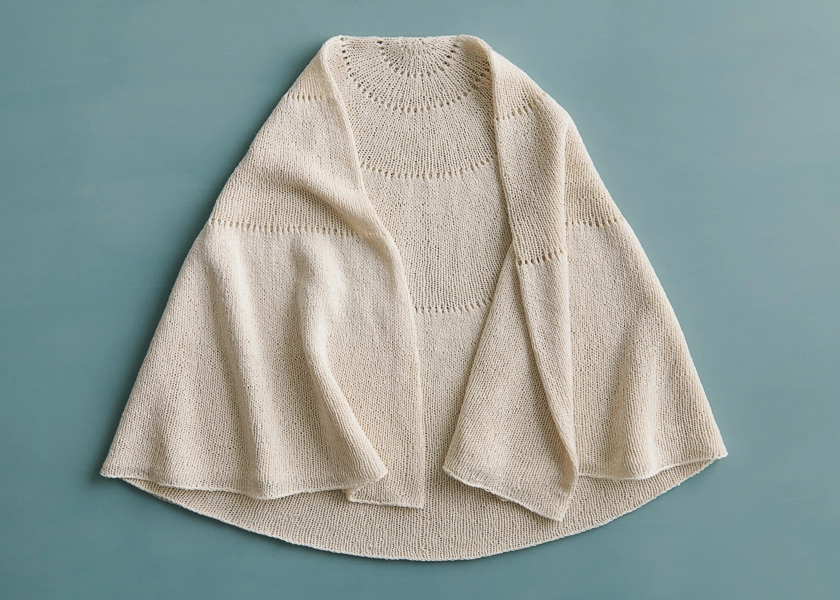
Designed by Purl Soho designer, Gianna Mueller. Click here to see even more of Gianna’s designs!
Share your progress and connect with the community by tagging your pics with #PurlSoho, #PurlSohoBusyHands, #PurlSohoConcentricCirclesShawl, and #PurlSohoCattailSilk. We can’t wait to see what you make!
Materials
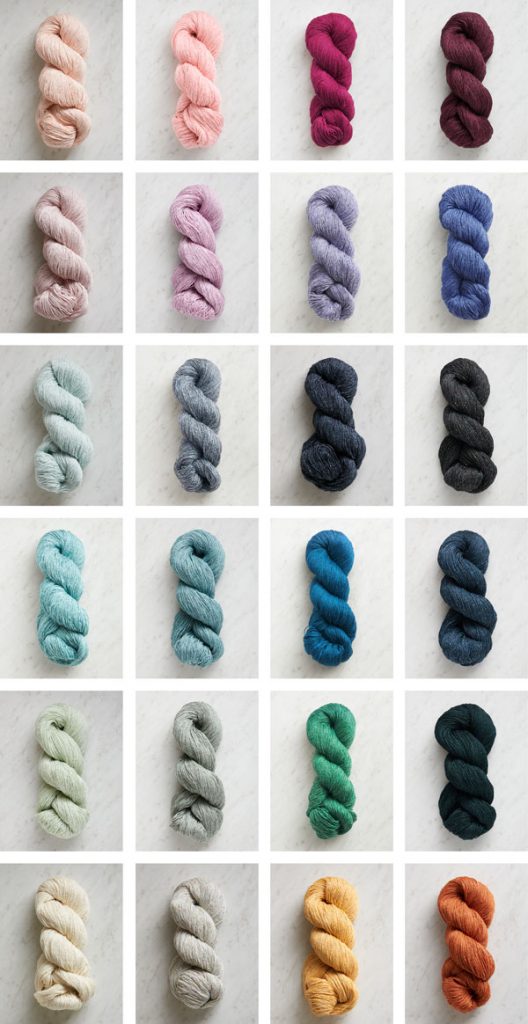
- 2 (7) skeins of Purl Soho’s Cattail Silk, 100% mulberry silk. Each skein is 618 yards/ 100 grams; approximately 1185 (4240) total yards required. We used the colors Moon White and Flower Field Charcoal.
- US 2 (3 mm), 24- and 47- or 60-inch circular needles (NOTE: You can use just the 47- or 60-inch needles, but they may be a bit unruly at the beginning of the project when you’re working only a few stitches!)
- A spare US 4 (3.5 mm) or larger needle, for binding off
- A stitch marker
GAUGE
30 stitches and 38 rounds = 4 inches in stockinette stitch
SIZES
Kerchief (Shawl)
- Finished Diameter: 41¼ (75) inches in diameter
- Finished Circumference: Approximately 77 (154) inches circumference unblocked, stretching to 130 (236) inches circumference blocked
SAMPLES: The Moon White sample is the Kerchief size, and the Flower Field Charcoal is the Shawl size.
Notes
Magic Loop
Because this shawl starts with a very small circumference and doubles in size every time you work an Increase Round, we found it easiest to use the Magic Loop technique to avoid changing needles more than once. As the pattern progresses, there will be enough stitches to easily fill up your needles so you’ll no longer need to use Magic Loop and can just work in the round.
For more help with Magic Loop, visit our tutorial here!
PATTERN
Cast 9 stitches onto shorter US 2 needles, dividing the stitches between needles for Magic Loop (see Notes). We used a basic Long Tail Cast On.
Place marker for end of round and join for working in the round, being careful not to twist the stitches.
Knit to end of round.
Increase Round 1: Knit front and back (kfb) into every stitch to end of round. [18 stitches]
Knit 3 rounds.
Repeat Increase Round 1. [36 stitches]
Knit 6 rounds or until piece measures 1¼ inches from cast-on edge.
Increase Round 2: *Yarn over (yo), k1, repeat from * to end of round. [Stitch count doubles]
Knit 12 rounds or until piece measures 2⅔ inches from cast-on edge.
Repeat Increase Round 2. [144 stitches]
Knit 24 rounds or until piece measures 5¼ inches from cast-on edge.
NOTE: Change to longer needles when necessary.
Repeat Increase Round 2. [288 stitches]
Knit 48 rounds or until piece measures 10½ inches from cast-on edge.
Repeat Increase Round 2. [576 stitches]
Knit 96 rounds or until piece measures 20⅔ inches from cast-on edge.
For Kerchief size, go on to Finishing section below.
SHAWL SIZE ONLY
Repeat Increase Round 2. [1152 stitches]
Knit 159 rounds or until piece measures 37½ inches from cast-on edge.
FINISHING
With larger needles, bind off loosely knitwise.
Weave in ends and gently wet block, if desired.
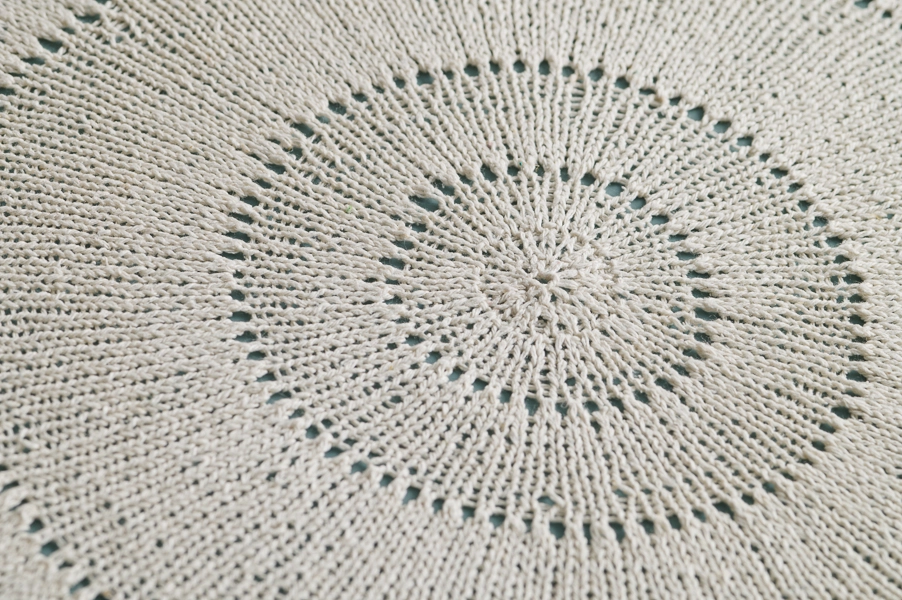
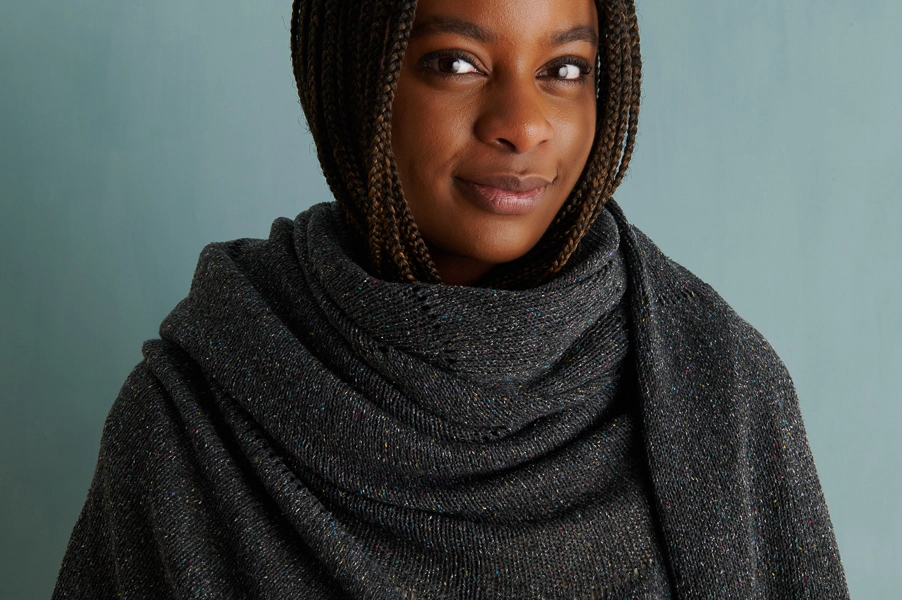
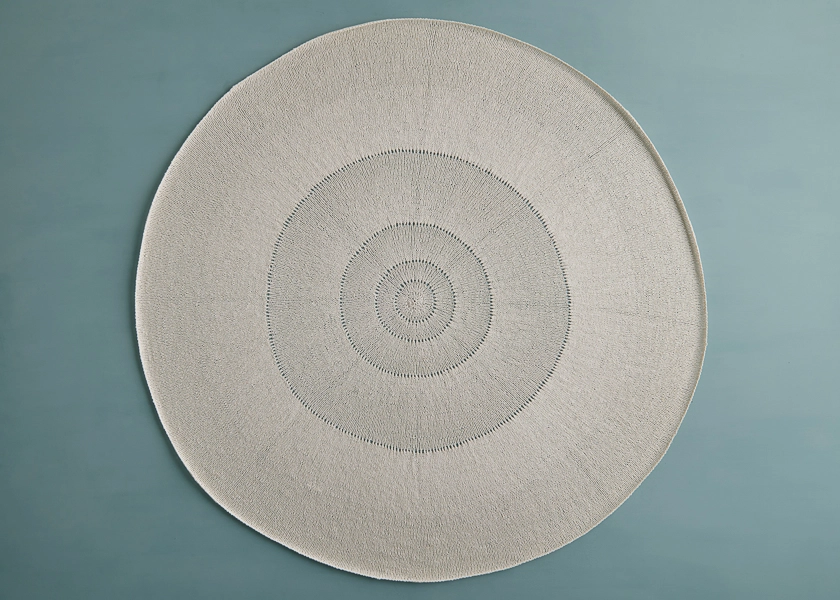

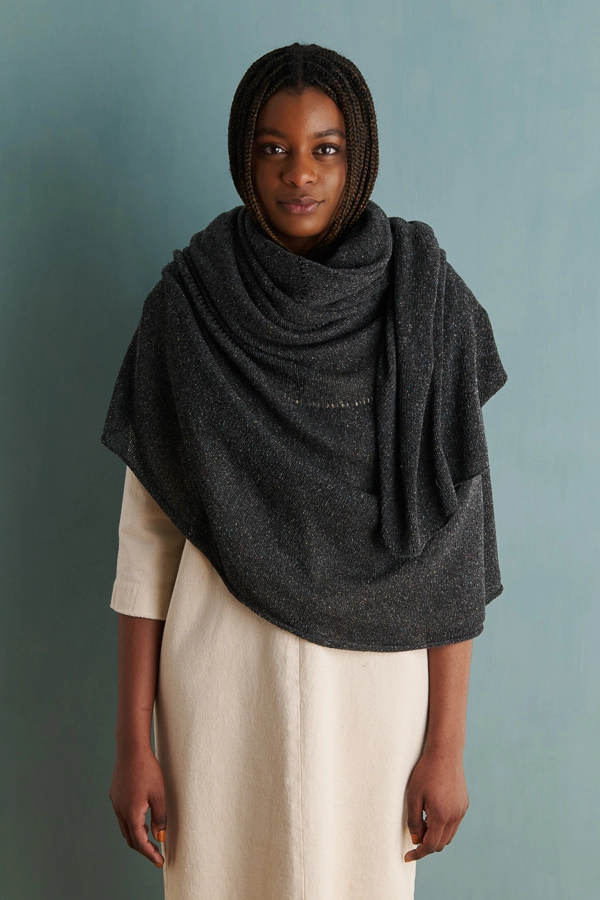
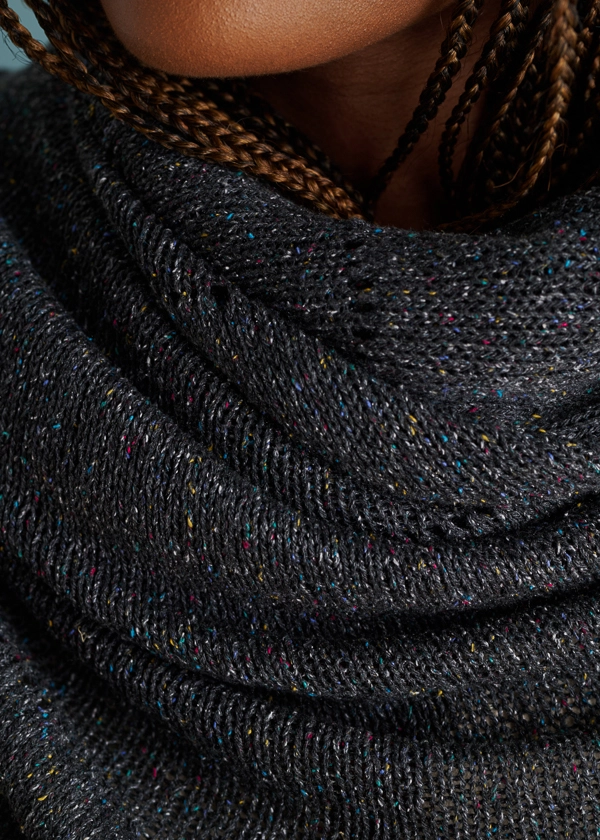
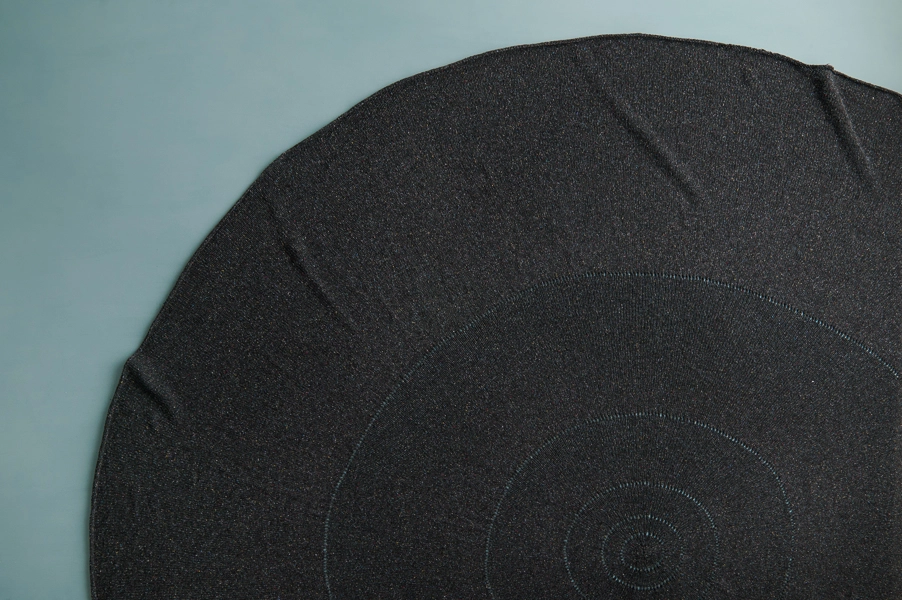
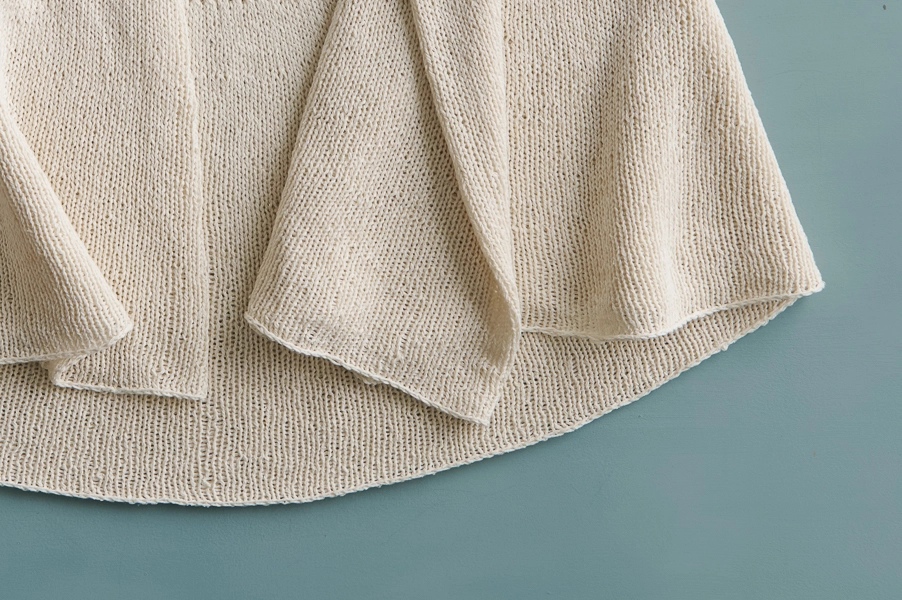



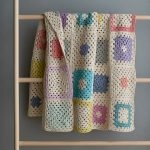

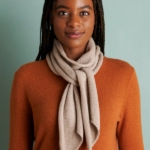
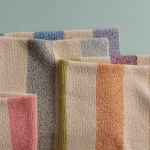

This is beautiful, but I think there’s a mistake in the dimensions given. The diameter of the kerchief is given as 41 1/4″ and the circumference as 77″. Mathematically, circumference =pi times the diameter. Pi times 41 1/4″ is just about 130″, not 77.
And the shawl diameter is 75″, so the circumference is 236″, not 153″.
I point this out only because it may make someone pause to realize that they’ll be knitting an almost 20′ row in the last row of shawl. And because I’m a math geek. 🙂
Hi,
Thank you so much for bringing this to our attention! You’re absolutely correct that the finished circumference of the shawl itself is much larger. What we had listed is the circumference based on the swatch gauge and final stitch count, which is a little misleading. For the square swatch, the gauge remains consistent throughout, but for the circular shawl, the gauge is different depending on how close/far you measure from an increase round. So while the swatch gauge is the gauge you need to attain to knit this project, it’s not actually the gauge for the entire project, if that makes sense!
To help clarify things, we’ve updated the measurements section to say the following:
Finished Circumference: Approximately 77 (154) inches circumference unblocked, stretching to 130 (236) inches circumference blocked
Thanks again for letting us know about this problem!
All the best,
Lili
This is the Elizabeth Zimmerman Pi Shawl. Why are you crediting a different designer?
Hi Kitty,
Thank you for writing in. We are passionate about respecting all designers and their work, but maybe most especially Elizabeth Zimmermann’s! We consider her a matriarch of the knitting community, and she has always been an enormous inspiration to us. And so, we are hugely sorry that we did not acknowledge the work she did to make pi shawls accessible to designers and knitters everywhere. We are grateful to you for pointing this out and have added her contribution to this pattern to our story.
We do want to say that our designer did not actually copy Elizabeth’s pattern and that it’s more a case of her formula being second nature to how we approach knitting a circle. Not tracing the origin back to EZ was honestly an oversight, one that we are more than happy to correct! Thank you again for reminding us of our history!
All the best,
Lili
I am 5’3” and would like to make a shawl that’s shorter than the big shawl. I would guess that the pattern is easily adjustable. How many skeins would you recommend (in cattail silk)?
Hi Sue,
Thanks for reaching out. This pattern certainly is easily adjustable! Can you let me know how big you’d like to make your shawl? (Since it’s a circle, the most useful measurement would be what diameter you’d like it to be.) Then, I can calculate how much yarn you’d need for that size!
All the best,
Lili
this is absolutely amazing. I will try to knit this beautiful shawl. I love your site, even I cannot affort the products, but they are so beautiful. I enjoy every mail from you.
Greetings from Switzerland, Winnie Gasser-Wernas
This is apparently a complete knockoff of Elizabeth Zimmerman’s Pi shawl, which I’ve made many times. You don’t so much as mention her in the pattern. I’m really shocked you would be so blatant in your theft of ideas.
Hi Liz,
Thank you for writing in. We are passionate about respecting all designers and their work, but maybe most especially Elizabeth Zimmermann’s! We consider her a matriarch of the knitting community, and she has always been an enormous inspiration to us. And so, we are hugely sorry that we did not acknowledge the work she did to make pi shawls accessible to designers and knitters everywhere. We are grateful to you for pointing this out and have added her contribution to this pattern to our story.
We do want to say that our designer did not actually copy Elizabeth’s pattern and that it’s more a case of her formula being second nature to how we approach knitting a circle. Not tracing the origin back to EZ was honestly an oversight, one that we are more than happy to correct! Thank you again for reminding us of our history!
All the best,
Lili
Hi, just wondering – isn’t a US 2 a 2.75 mm needle?
Hi Kyle,
Thanks for reaching out. The metric sizes we indicate in our patterns might differ from what you’re used to since different needle companies sometimes assign the millimeter measurements to different US sizes. These inconsistencies, while frustrating, are very common when comparing needles, so when in doubt, rely on metric sizes…they’re standardized! And as long as you find needles with which you can achieve the correct gauge, those will work for the pattern!
All the best,
Lili
Metric sizes are an actual measurement as opposed to American or UK sizes which are really just a number on a scale.
Exactly! This is what makes them unambiguous, as opposed to other sizing methods which are not as standardized.
All the best,
Lili
PI!! LOVE IT!
It’s a heavenly looking shawl and I’d like to make the smaller version, but am put off by the huge number of stitches.
Would it work out if I used larger needles and dk or wool and follow the stitches until I’m happy with the size. Or am I being too simplistic?
Hi Rosamond,
Yes, you can absolutely make this pattern in a thicker yarn! You can follow the pattern exactly as written, binding off whenever your shawl is as large as you’d like.
All the best,
Lili
The 4 innermost circles look to be darker than the outermost circle. Is this because of the “density” of innermost versus outermost? Am I way off base in my thinking? If yes, what could be the reason?
Thanking you in advance,
Karen
Hi Karen,
Great question! Yes, this has to do with the density of the gauge at different spots in each section. If you look closely at each ring of increases, you’ll see that the fabric is lighter right after them, gradually gets darker throughout the ring, and then gets immediately lighter after the next round of increases. This follows the density of the gauge, since it’s denser right after the increases, and then gets less dense throughout the ring! While this effect is prominent when the shawl is laid out flat, it’s much less noticeable when worn. It’s also more noticeable in lighter colors!
All the best,
Lili
So beautiful! I’d like to try the smaller size because the bigger one may take my whole life to finish… Just wondering, how to wear the smaller one? Is it possible to wrap it around your neck? Or you can only put it on your back like a cardigan?
Hi Kate,
Thanks for writing in! You can wear the smaller shawl in either of the ways you just described–it’s a very versatile size!
All the best,
Lili
I’d like to make this pattern somewhere between the Kerchief size and the Shawl size. If Kerchief (41.25″ diam) is 1185 yds and Shawl (75″ diam) is 4240 yds, how much would I need for approx 62″ diameter? Is there a formula for calculating this? Thanks!
Hi Circe,
You would need 5 skeins of Cattail Silk to make a shawl with a 62″ diameter! To make this sort of calculation, you first need to find the areas of both the modified size and one of the original sizes (since this shawl is circular, you can use the area of a circle formula, A = pi r squared. Once you’ve determined the area of both sizes, you can set up a ratio with the yardage and solve for the yardage of the modified size. Then, you just need to divide the result by the yardage of 1 skein of Cattail Silk (618 yards), and that’s your answer!
All the best,
Lili
Thanks so much for your explanation of how to figure out the necessary yarn quantity. I am halfway through the last “kerchief” rounds and wondering (already!) how to block it.
Do you have any suggestions for how to block such a large circular shawl without the edge looking scalloped? (Not to mention finding the space in a house?!)
You’re very welcome! I reached out to our design team to ask how they blocked our samples of this shawl, and they let me know that you can block it like you would normally, making sure you lay out a large enough area of blocking mats (or cardboard, towels, etc). The edge will probably not be scalloped, but rather, it’s more likely to be too tight. We highly recommend binding off with a much larger needle (like a US 7) to ensure that the edge can extend to the full circumference of the shawl!
All the best,
Lili
Hello,
How do you think linen quill work for this shawl? I have extra stash of linen quill and would love to use it for this project.
Hi Hannah,
Linen Quill would be perfect for this shawl since it’s a fingering weight yarn just like Cattail Silk! We recommend doing a gauge swatch for any yarn substitutions to double check that your gauge matches with the pattern. Here’s our guide on swatching in case you’d like more information on that (https://www.purlsoho.com/create/2020/08/20/all-about-gauge/)! Hope this helps!
All the best,
Cat
Hi! Do you think mohair yarn, like tussock is good for this pattern?
Hi Kate,
I think that Tussock, or any mohair yarn, would be amazing for this shawl! It will create such a light and floaty knit fabric.
All the best,
Lili
Beautiful! If I want to make a larger size (for a queen bedspread) would I just keep doubling the row count between increases?
ie, Increase round, knit 96 rounds
Increase round, knit 192 rounds
Increase round, knit 384 rounds
Etc etc, until desired size?
Hi D,
Thanks for reaching out! Yes–all you have to do to continue the “formula” is keep doubling the rows/distance between increase rounds!
All the best,
Lili
A picot edge would dress this up, any thoughts on how to do that?
Hi Mindy,
Ooooooh that would look really nice! To work a picot edge on this pattern, just do a round of *k2tog, yo* all the way around. Then, knit for another inch or so, bind off, and then seam the bind-off edge to the wrong side of the fabric after folding it inwards to reveal the picot edge. You can even switch to a smaller needle for the last inch or so after the *k2tog, yo* round to help the bind-off stitches line up with the stitches you’re seaming them to!
All the best,
Lili
Would it be a good idea or poor idea to use Jeny’s Surprisingly Stretchy Bind-off for this project?
Hi Jenna,
I think that’s a great idea! I’d recommend giving it a try for a few inches, and then testing to see if that portion of the edge lays flat. If so, then keep going!
All the best,
Lili